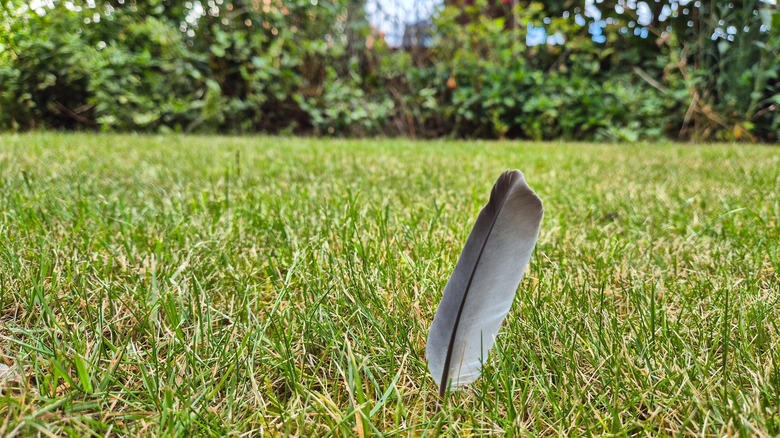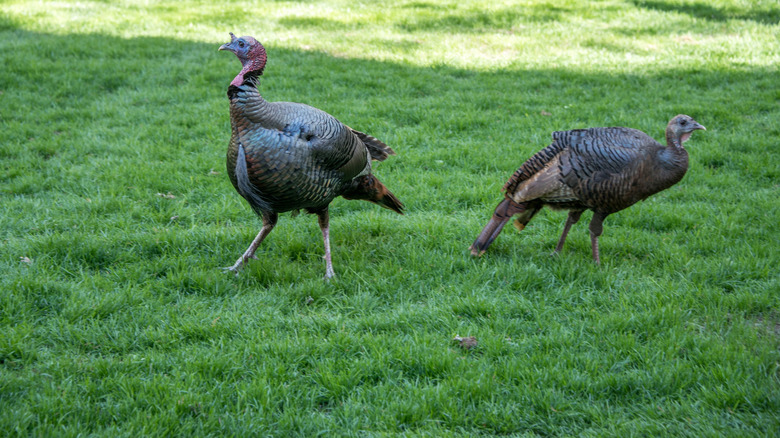The Unexpected Bird That Could Be Wreaking Total Havoc On Your Lawn
Are you finding scratch marks or holes in your lawn? Are plants being disturbed, knocked over, or stomped on in your garden? Have you spotted what look like very large bird droppings? These issues may be caused by a bird we wouldn't typically think of as foraging in residential areas. This large avian visitor is none other than the wild turkey, which have been making themselves at home in urban and suburban locales in recent years. You might see more wild turkeys in the fall because that's when the young males establish flocks. In spring, abundant insects on plants and seeds leftover from late fall sowing encourage birds to lawns and gardens.
The damage turkeys do to lawns is generally considered a nuisance rather than serious destruction. They also get falsely accused of damage to crops and landscaping committed by other critters — typically nocturnal mammals like deer, skunks, or raccoons. Turkeys are omnivores that prefer to eat bugs, especially early in the season. A study of young wild turkeys found that 77% of their diet was insects. For adult birds, 50% of their diet was waste corn and 27% wild plants. They may dig up mulch, and they certainly poop a lot, but they aren't found on gardener's lists of hole-digging animals. So, how can you tell which pest is creating holes in your yard? While wild turkeys technically could be making full-blown holes, this kind of damage is more likely to be caused by small mammals digging for grubs. If they leave those grubs behind, however, visiting wild turkeys will eat them.
How to spot wild turkey damage on your lawn and deter these birds
How do you determine if wild turkeys are the culprits wreaking havoc on your lawn or something else? Look for their distinctive backwards arrow footprints in muddy areas and the J- or L-shaped droppings produced by male turkeys. Female wild turkey droppings are lumpy. The scratch marks turkeys make when foraging for food often leave an area looking like it's been raked. While the damage these birds leave in their wake is usually minor, they're still among the birds you don't want to see in your yard. Thankfully, several techniques are available for deterring wild turkeys from your lawn and tidying up the mess they leave.
Whatever you do, don't feed them. Remove from your yard any food, such as pet or livestock food, birdseed, and bird feeders that might tempt them. Wild turkeys will eat berries and fruit, so gather fallen fruit often and consider covering berry bushes with netting. Keep food out of reach by pruning branches from seed- and berry-bearing plants below 4 feet. Use fill dirt to conceal unwanted holes in your backyard left by turkeys or other wild animals.
Scare tactics like making loud noises and squirting foraging turkeys with water via motion-detector sprinkles can be effective, but only temporarily. The birds quickly get accustomed to these measures. Trapping is possible but not especially useful because you'll only be able to trap and relocate a few turkeys at a time. There are strict regulations governing the lethal removal of wild turkeys. If you're severely inundated with these birds and considering drastic measures, consult with your municipal authority or state government wildlife agency first.

